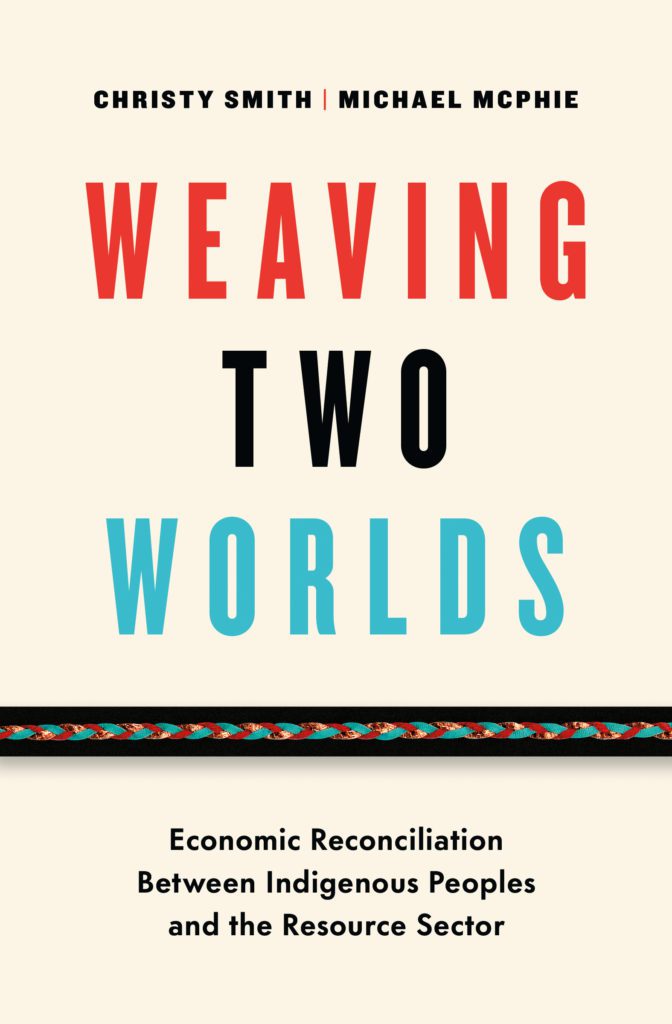
Less than a month ago, the Province of British Columbia published its Declaration Act Action Plan, a proposal to meet the objectives of the United Nations Declaration on the Rights of Indigenous Peoples (DRIPA). The plan, released on March 30, 2022, includes 89 specific priority actions for implementing DRIPA in BC and advancing reconciliation over the next five years.
BC’s mineral exploration and development industry can and will contribute in tangible ways to achieving these goals through meaningful engagement and partnerships with First Nations at hundreds of projects across the province. In a new book, fortuitously published on March 1, 2022, industry leaders Christy Smith and Michael McPhie help outline how.
Weaving Two Worlds examines economic reconciliation between Indigenous Peoples and the resource sector in-depth. AME spoke with Smith about how the book came together and who it is for.
Smith, a member of K’ómoks First Nation, living in her traditional territory on Vancouver Island, says the book is a combination of her and McPhie’s voices and experiences, offering “a really unique combination of the Indigenous perspective of extractive resources and the non-Indigenous perspective of an operator”. McPhie, an industry executive with 25 years of experience, is currently the co-chair and founding partner of Falkirk Environmental Consultants Ltd. and Vice President of Sustainability and External Affairs with Talisker Resources Ltd.

The book leads the reader on a journey of self-reflection, encouraging them to identify their own biases before joining others at the table. “We all have preconceived notions and if we’re not willing to challenge them, then we can’t be open enough to change,” says Smith.
Smith and McPhie have worked together for over a decade, as partners in Falkirk Environmental Consultants and with several mineral exploration and mine development companies such as IDM Mining, Ascot Resources, Talisker Resources and TDG Gold. McPhie began writing the book back in early 2020 as a guide for how to successfully navigate the increasingly complex Indigenous, social, environmental and regulatory aspects of mineral exploration and mine development. Recognizing that the relationship between Indigenous peoples and resource companies is one of, if not the, most important part of determining whether a project will be successful in navigating this landscape, he reached out to Christy and asked if she would be willing to join him in this effort. In joining forces and discussing these subjects using both an Indigenous and non-indigenous voice, they have created a unique and much-needed perspective on working towards economic reconciliation with Indigenous Peoples.
Although relevant to anyone working with Indigenous Peoples, Weaving Two Worlds is primarily written for resource project managers on the ground who are trying to move a project forward through a complex emotional and regulatory landscape. Smith says the book provides support for those managers in the middle who are reporting to upper management while at the same time mentoring younger staff, engaging in conversations with First Nations and laying the groundwork for direct economic reconciliation, such as equity agreements, capacity building and employment.
“We wanted the book to be encouraging,” says Smith, “We give a lot of case studies and examples of good working relationships.”
Discover more about Weaving Two Worlds and explore other resources for explorers on our website, including AME’s Indigenous Guidebook (sponsored by Seabridge Gold).
